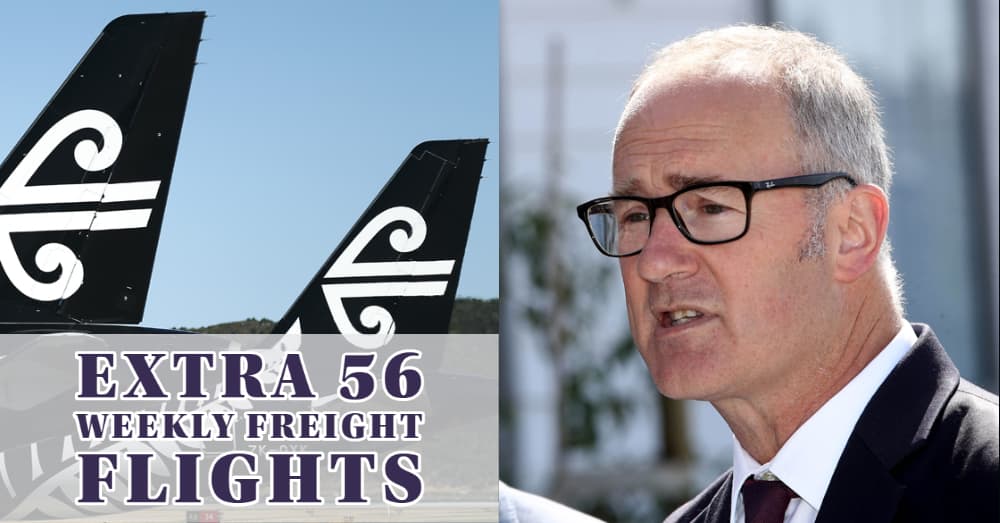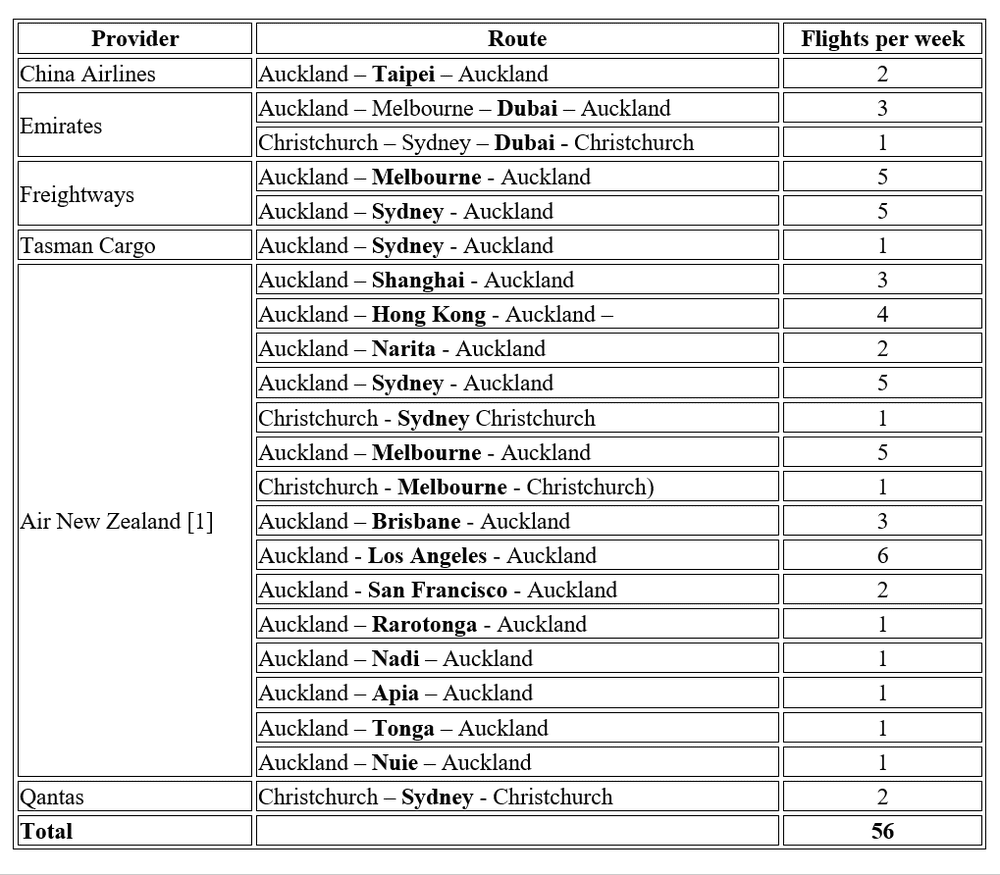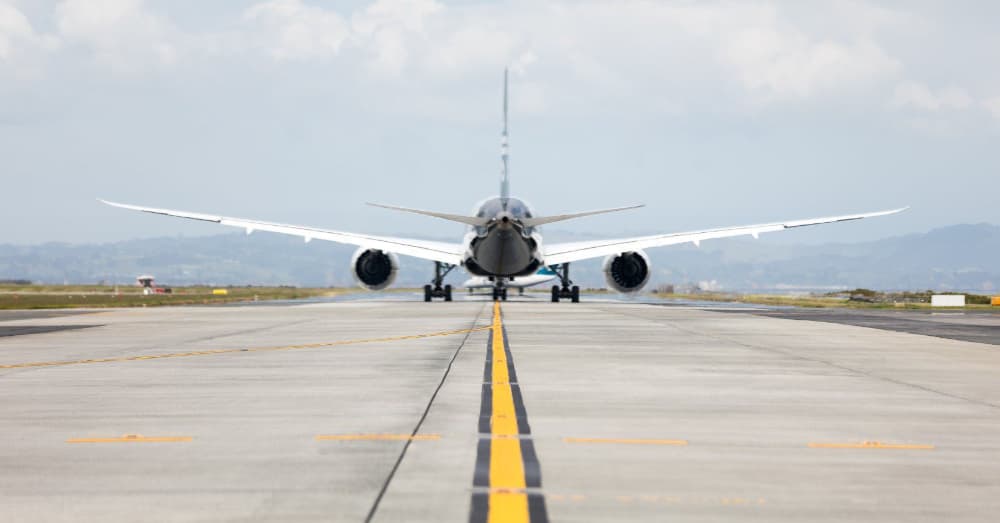
International Cargo Flights Ramp-Up to/from New Zealand
7-minute read
Government support to help restore international air freight capacity has added 56 weekly cargo flights from New Zealand, with more to come, Transport Minister Phil Twyford announced today.
The International Air Freight Capacity scheme adds capacity for high-value export cargo and maintains trade links with key global markets. It also ensures there are essential imports such as medical supplies.
Phil Twyford says it is vital air freight capacity recovers as New Zealand responds to the COVID-19 global pandemic.
“At the beginning of the pandemic, we moved quickly to support charter flights to ensure New Zealand had the crucial supplies it needs and to back our exporters. However, these flights only allowed businesses to export to a limited number of markets.
“This scheme builds on that support, with a schedule of weekly flights to a greater number of global markets. This new schedule restores more export markets to more businesses and with greater frequency.
“There is a huge demand for air freight, at a time when capacity is limited. This scheme helps provide certainty for business, while airlines and carriers respond to a changing world.
“The $330 million scheme is short-term and market-led. Funding is provided to guarantee cargo on key routes under agreements with the carriers. Carriers then offer that capacity directly to freight customers on commercial terms.
“We invited commercial proposals to deliver air freight capacity with key markets. The first successful applicants are Air New Zealand, China Airlines, Emirates, Qantas and Tasman Cargo.
We are working with other carriers, and expect to make further announcements shortly.
“We are closely monitoring the international air freight market, and will respond based on how the COVID-19 situation evolves. As the market recovers, we will reassess the need for funding.
“The Government set aside $600 million for the aviation sector as part of its $12.1 billion COVID-19 support package.
Acknowledging the impacts of the pandemic on the domestic aviation sector, the Government has also provided immediate funding for local air freight and lifeline air services.
International Air Freight Scheme Q&As
Where are the flights going?
The initial schedule covers the following routes and frequencies, but there is flexibility to adjust for demand, and we are still engaged with other potential providers.

- Ability to add Singapore, Taipei, Seoul, Sydney (from Wellington), Brisbane (from Christchurch), Brisbane (from Wellington), Perth, Chicago, Houston, Vancouver.
- Due to airspace restrictions, Air NZ has some constraints operating to destinations in the Pacific Islands.
- Pacific Island routes will be funded under specific criteria reflecting how these routes support wider regional objectives.
Note: Red routes Air NZ, and Air NZ potential expansion destinations are marked yellow.
How does an added capacity of 56 weekly air freight flights compare with current and pre-COVID-19 levels?
There are currently around 90 commercial and charter flights running per week, so the scheme adds significant capacity. However, prior to the COVID-19 impact, New Zealand would have had more than 600 flights per week, so there is a long way to go.
How can exporters and importers access the scheme?
Contact Easy Freight team and we will give you all the available options.
Which airlines are involved?
- The scheme was open to all potential providers including passenger airlines, dedicated freight carriers and others in the sector. Supporting passenger airlines to maintain international routes was a key consideration.
- The first successful applicants are Air New Zealand, China Airlines, Emirates, Qantas, and Tasman Cargo. We are working closely with carriers, and will make further announcements shortly.

What was the criteria used to appoint these operators?
The key assessment criteria was the contribution to our primary objectives: to ensure the supply of critical imports (particularly medical supplies) and maintain the economic benefits of high value exports and secondary objectives: to provide opportunities for repatriations, maintain future tourism capacity, international relations, and the competitiveness and sustainability of the aviation sector.
We had to be satisfied that, without Government support, the airfreight capacity would not be provided or would only be available at a cost that undermined the objectives.
How were the preferred destinations decided?
The Ministry of Transport is leading the scheme, and worked closely with MBIE, MPI, NZTE, and Customs to understand the type, volume, and movement of exports and imports, and impacts being seen by exporters.
Engagement was held with freight forwarders, the Air Cargo Council, Air NZ, BARNZ, Auckland and Christchurch airports to see where freight was going, by airport, to which destination, and by which carrier.
As approver of air services, the Ministry monitors air cargo operators flying to New Zealand, and continue to track cargo movement of airlines through slot information.
How much is the Government funding each flight?
Each agreement is different, and is tailored to the carrier’s proposal, route and freight capacity. Generally speaking, the level of support is dependent on how full the plane is, with funding reduced as the aircraft reaches freight capacity.
Within the terms of the funding agreement, Government will not fund flights that operate below a specified threshold.
Does the scheme return us to pre-COVID-19 air freight rates?
No. Market rates for air freight have increased and will stay above pre-COVID-19 rates in the medium term.
This is because before the global pandemic, paying passengers essentially subsidised freight, and a freight-only operation will now need to carry most of the costs, at least until passengers return, or the market adapts in other ways.
Why isn’t the Government fully subsidising these flights to restore pre-COVID-19 freight rates?
The Government is stepping in temporarily to restore some of the previous air freight capacity. Fully subsidising flights is not economically viable or desirable: the market will need to adjust to changes in prices.
The scheme uses a robust market-led approach, requires importers and exporters to pay for their freight on a commercial basis, and aims to help the sector recover as quickly as possible.
How is the funding level calculated?
Each agreement is different. The amount paid depends on a formula set out in the agreement. Across the agreements, we estimate the total amount paid will be around $NZ6 million per week, but this will fluctuate.
Why did the Government appoint these other airlines when Air New Zealand have so much spare capacity?
Air New Zealand is a big part of the scheme, however, our national carrier doesn’t fly everywhere, and the use of passenger aircraft for freight presents some limitations.
The other providers give us more destinations, flexibility and capacity, and provides for choice and some competition for exporters and importers.
Is there a target number of air freight flights you are working towards?
No. We are carefully monitoring the overall airfreight market – this scheme is only part of a broader market. Depending on market conditions, we will be ready to ramp up, wind down or adapt the scheme.
How does scheme ensure priority freight such as pharmaceuticals are delivered?
The scheme is geared toward restoring air freight capacity. The more freight moved, market confidence will be restored, which will drive both increased capacity and increasingly competitive freight rates.
Air operators will also prioritise freight such as PPE and pharmaceuticals.
What about repatriation of New Zealanders overseas?
Some of the providers are using passenger aircraft and will work with Government on repatriation opportunities that occur along the freight routes.
How long does the scheme run for?
The first phase of contracts run to the end of June, but we anticipate that the scheme will run for six months and potentially longer.
What accountability / transparency will there be?
The providers are required to regularly report on their operations, prices and goods carried, and will be monitored by the Ministry of Transport.

How will the Government monitor the effectiveness of these flights, and the IAFC scheme?
We have a monitoring programme which will focus on the positive (and potential negative) effects of the scheme on the air freight market, and we will adjust the scheme accordingly.
Our intention is to exit the scheme once the international air freight market stabilises according to agreed criteria.
If the other part of the aviation assistance package does not use the entire amount allocated to it, can the surplus be used here?
The Government is closely monitoring the international airfreight market, and will respond based on how the COVID-19 crisis evolves over time. As the market recovers, it will reassess the need for ongoing funding.
Are these support measures consistent with New Zealand’s international trade obligations or our policy to oppose subsidies?
The COVID-19 pandemic is an extra-ordinary set of circumstances. International air freight capacity has collapsed, putting at risk the ability to import and export critical products such as essential medical supplies.
A number of other governments are, like New Zealand, stepping in temporarily to help maintain some air freight capacity. New Zealand’s scheme uses a robust market-led approach, requires importers and exporters to pay for their freight on a commercial basis, and aims to help the sector recover as quickly as possible.
Source: Transport Minister Phil Twyford (3 May 2020)
P.S. Easy Freight Ltd helps New Zealand importers & exporters to save money on international freight and reduce mistakes by guiding how to comply with Customs and biosecurity rules.
➔ Contact us now to learn how we can assist you.
